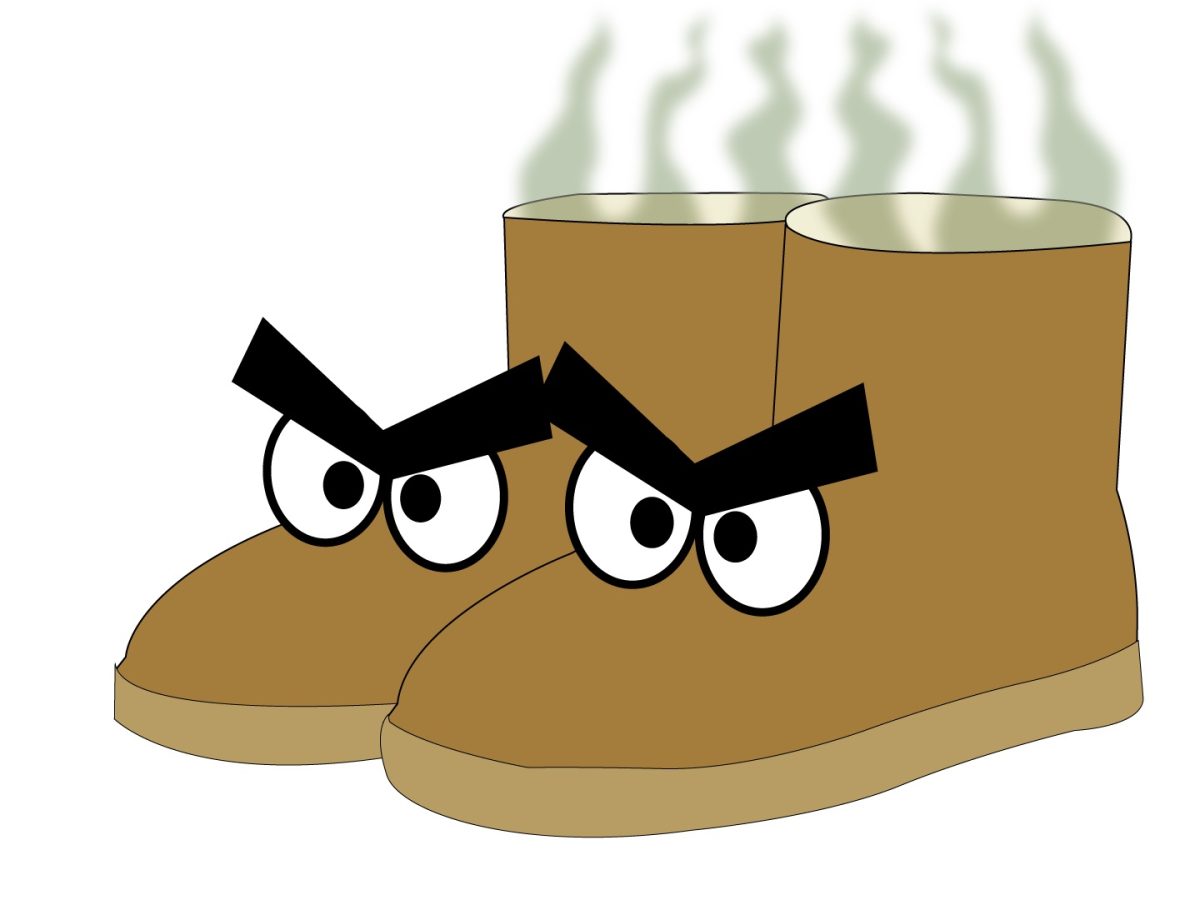Sheathed in sheepskin, people crisscross the campus at San Diego State University.
Images spring to mind of wise men wearing heavy cloaks, headed to Jerusalem not an 8 a.m. lecture. But those images would be wrong. Students are rocking the tanned hides on their feet, in the form of UGGs.
UGGs are everywhere. Sit on any campus walkway and in the space of 10 minutes, you’ll be overwhelmed by a sea of beige-clad feet, traipsing away to class.
Peeking out from below blue jeans and exposed to the world by a pair of shorts, it’s clear that UGGs have taken over campus. But they are a major health risk to your feet. It doesn’t help that they are also just plain ugly.
From afar, the debate on UGGs looks like one centered on whether or not the beige slippers are ugly. But there is a deeper problem afoot.
UGGs can be catastrophic for your feet.
The podiatrists at Talaria Podiatrists, based in Australia, have even coined a phrase for a condition that they see often.
“UGG boot syndrome.”
UGG boot syndrome is more commonly known as plantar fasciitis and can be debilitating to people who suffer from it.
The most common symptom of plantar fasciitis is pain on the bottom of the foot near the heel, wrote Jenette Restivo in an article for Harvard Medical School. This pain can come in the form of a dull ache or a sharp, stabbing sensation. The pain typically occurs after getting out of bed in the morning or after long periods of inactivity. It can also be caused by strenuous athletic activity, like long-distance running or dance, Restivo wrote.
UGGs have little to no support for your feet due to their flexible and soft construction that lacks proper arch support. Because of this lack of support, the muscles in your foot have to work harder to compensate for the movement that your foot is experiencing every time you take a step. Over thousands of steps, this instability can result in the muscles, ligaments and tendons becoming overstretched and strained, leading to plantar fasciitis.
“If I wear them for a full day my feet do kind of hurt after a while,” said Isabella Canale, a junior at SDSU and a big UGGs fan. “They aren’t comfortable over a long period of time, sometimes I get home and can’t wait to take them off.”
Over time, your ankles, knees and hips will start to hurt in tandem with your feet as they pick up the slack for your shoe’s lack of support. This can lead to long-term problems like arthritis and lower back pain.
The podiatrists at Talaria Podiatrists have another warning for wearers of UGGs: they’ve identified a condition that they’ve named “Crumpet foot.”
Due to the soft and fluffy interior inside of an UGG boot, your feet will start sweating if you wear them for a long time. This creates the ideal environment for the growth of bacteria and fungus, writes Talaria Podiatrists.
In the long run, this can lead to a buildup of bacteria in the boot and the possibility of wearers developing athlete’s foot. In its worst form, the bacteria can develop into a growth on your foot, which resembles a crumpet in texture.
“I only wear them in the winter because they are so warm,” Canale said. “In the summer my feet would just get way too hot and sweaty.”
Canale is doing the smart thing, but many students at SDSU aren’t.
“I saw a girl wearing them recently with a pair of shorts,” Canale said. “I wouldn’t do that, but I respected the look.”
UGGs are divisive in opinion. Some love the look, rocked by celebrities and students alike, while others think they are one of the worst shoes ever constructed. It’s really down to taste. But one fact is undeniable: UGGs are a health risk and shouldn’t be worn for long periods of time or in hot climates.
San Diego has a hot climate and students have long days. So please, for your foot’s sake, stop wearing them outside of the house.









